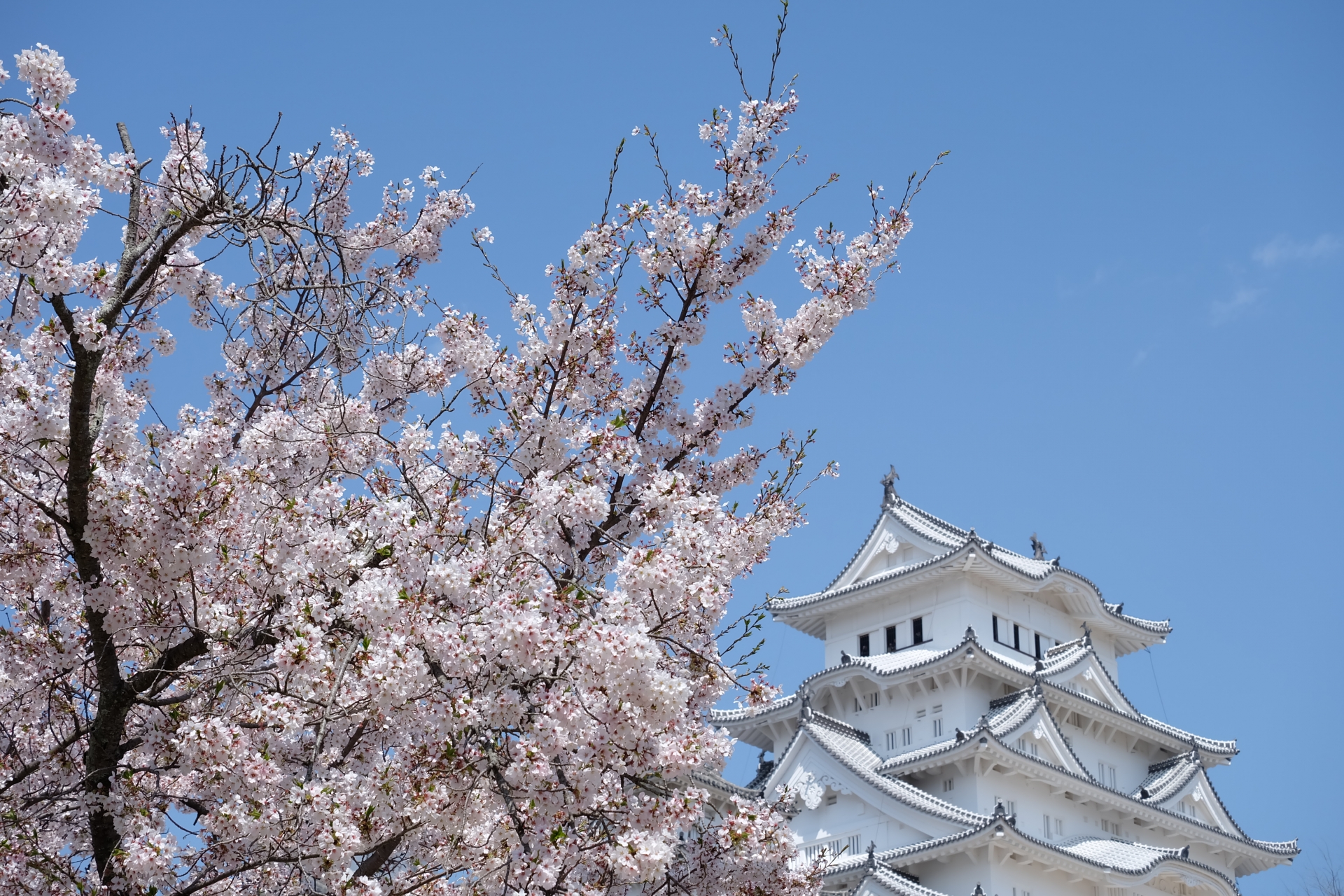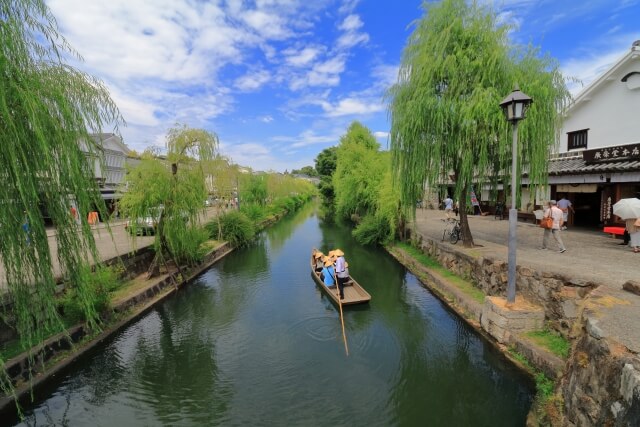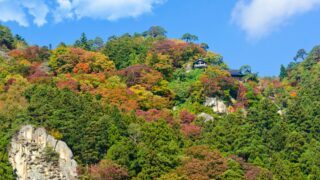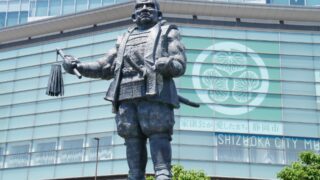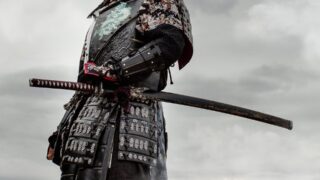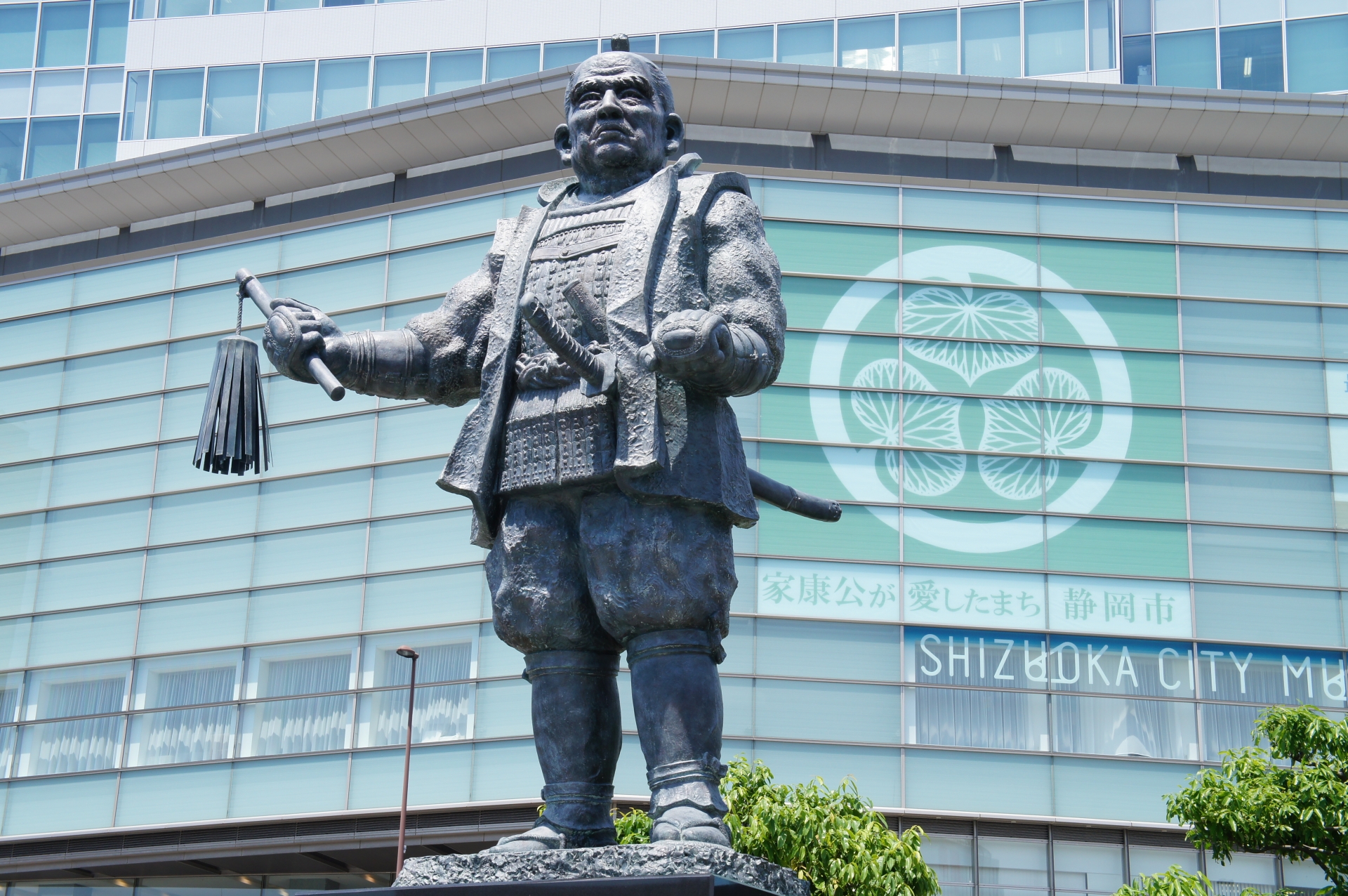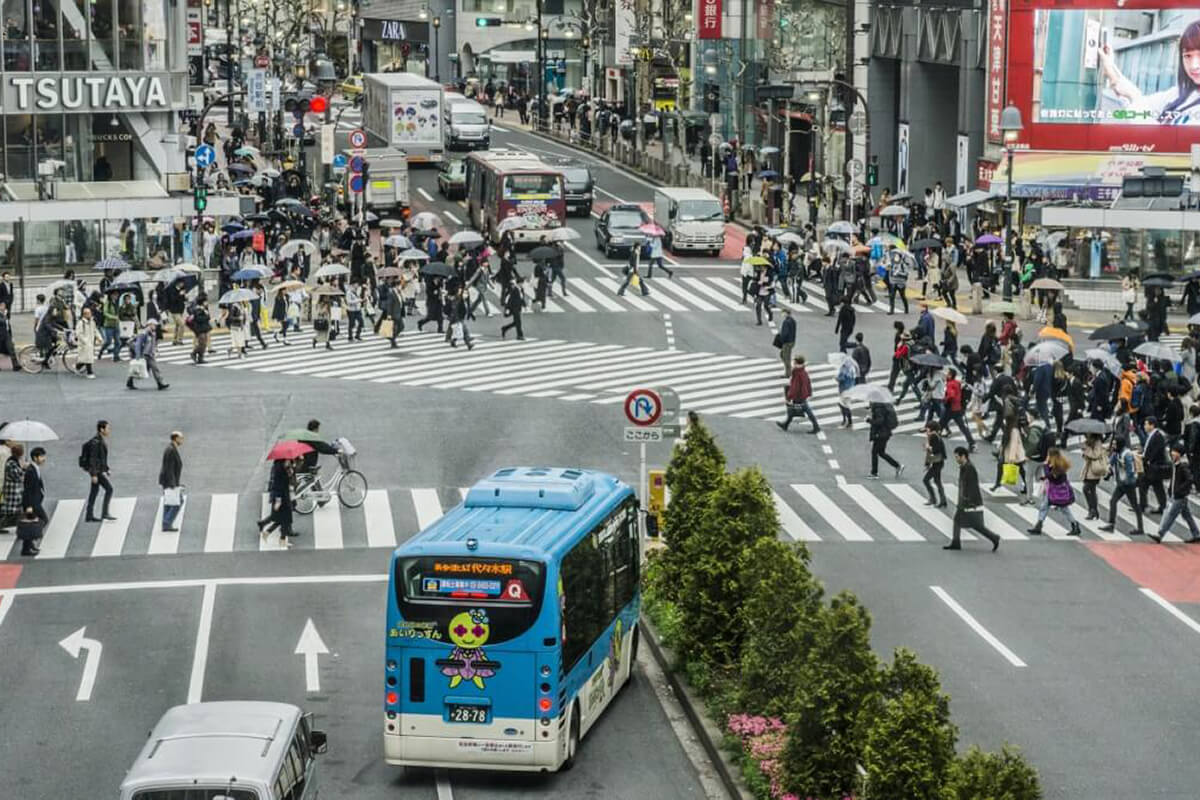This post may contain some affiliate links. When you click through and make a purchase we may receive some commission, at no extra costs to you
There are 12 original castles in Japan: “original” (現存天守) means they have a castle tower (or main keep) that was built during the Edo period or earlier. It may surprise you, as there are several castles around Japan, but only a dozen have survived centuries without being damaged or destroyed. This is mainly because the Meiji government demolished most of them in 1873 when they tried to turn the whole nation into a Westernized form by implementing a series of reformations. Old castles were regarded as useless, and the cultural values were ignored.
Today, we can enjoy 12 original castles across the country. Each fascinates visitors with unique features, and visiting them allows you to learn more about their history and backgrounds. In this article, we will introduce 12 original castles you can see in Japan!
History of 12 Original Japanese Castles
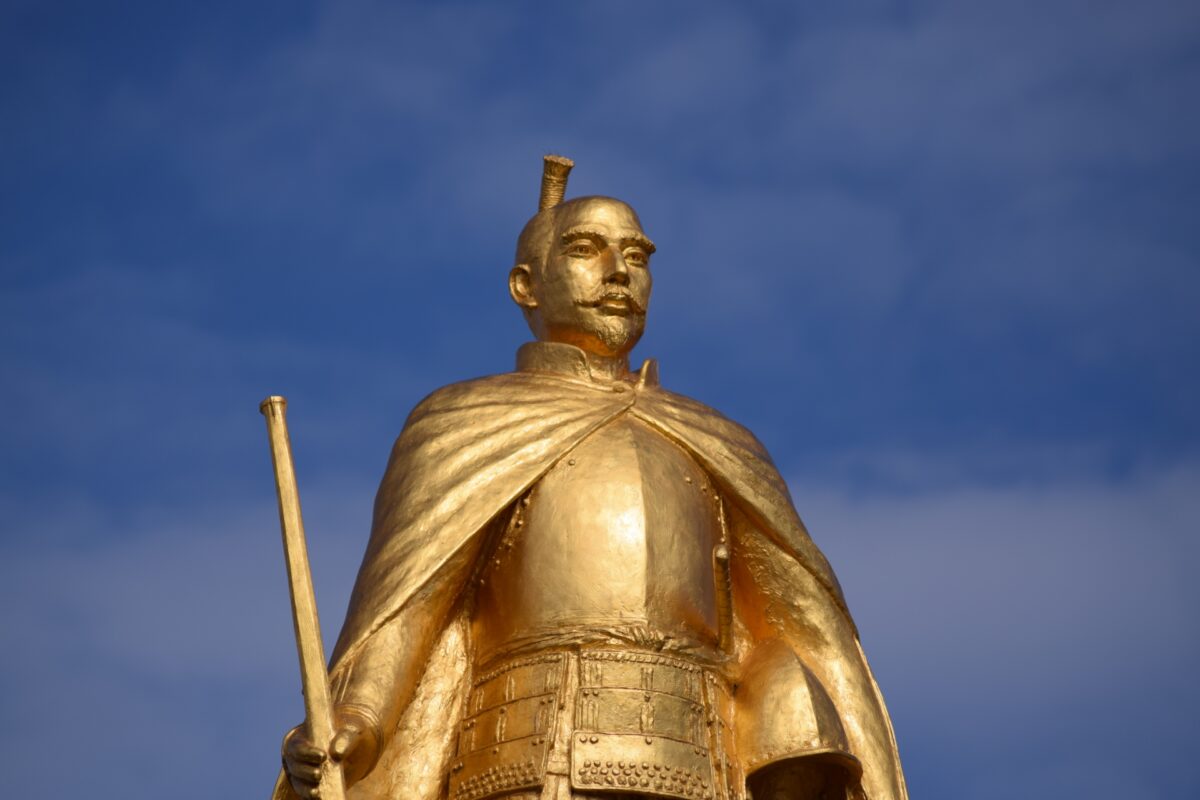
Like we mentioned above, the 現存天守, or original castles, mean that the castle was built in the Edo period or earlier and has a main keep. You’ve likely seen images of dramatic Japanese castles with soaring stone walls and impressive castle towers. But did you know that this iconic style wasn’t always the norm?
Early Japanese castles were much simpler, often consisting of a wooden keep within a fortified enclosure. It wasn’t until the late 16th century that the dramatic stone walls and towering keeps we associate with Japanese castles today began to emerge. This shift coincided with the rise of Oda Nobunaga, a powerful warlord who unified much of Japan. Nobunaga’s ambitious project, Azuchi Castle, with its imposing stone walls and elegant architecture, became a symbol of his power and a blueprint for future castle construction. This period saw a surge in castle building across the country, with many incorporating the new architectural elements.
However, this era of castle-building was short-lived. The Tokugawa Shogunate, which unified Japan in the early 17th century, implemented strict policies that limited castle construction, leading to the destruction of the vast majority of existing castles. As a result, over 3,000 castles were reduced to 170, meaning about 95% of the Japanese castles were ruined.
Then, in the late 19th century during the Meiji era, and as Japan embarked on a program of Westernization, the government ordered the demolition of many remaining castles. Some castles remained and were used as military bases but others were sold with very low prices or used for school campuses. Fortunately, a growing appreciation for the historical and architectural significance of these structures led to a movement to preserve them.
By the early 20th century, there were 20 castles left. Unfortunately, that number was reduced to 12 in the aftermath of World WarⅡ. While many were lost, a handful of these magnificent structures survived, offering a glimpse into Japan’s rich and turbulent past. Today, these surviving castles stand as powerful reminders of a bygone era, drawing visitors from around the world.
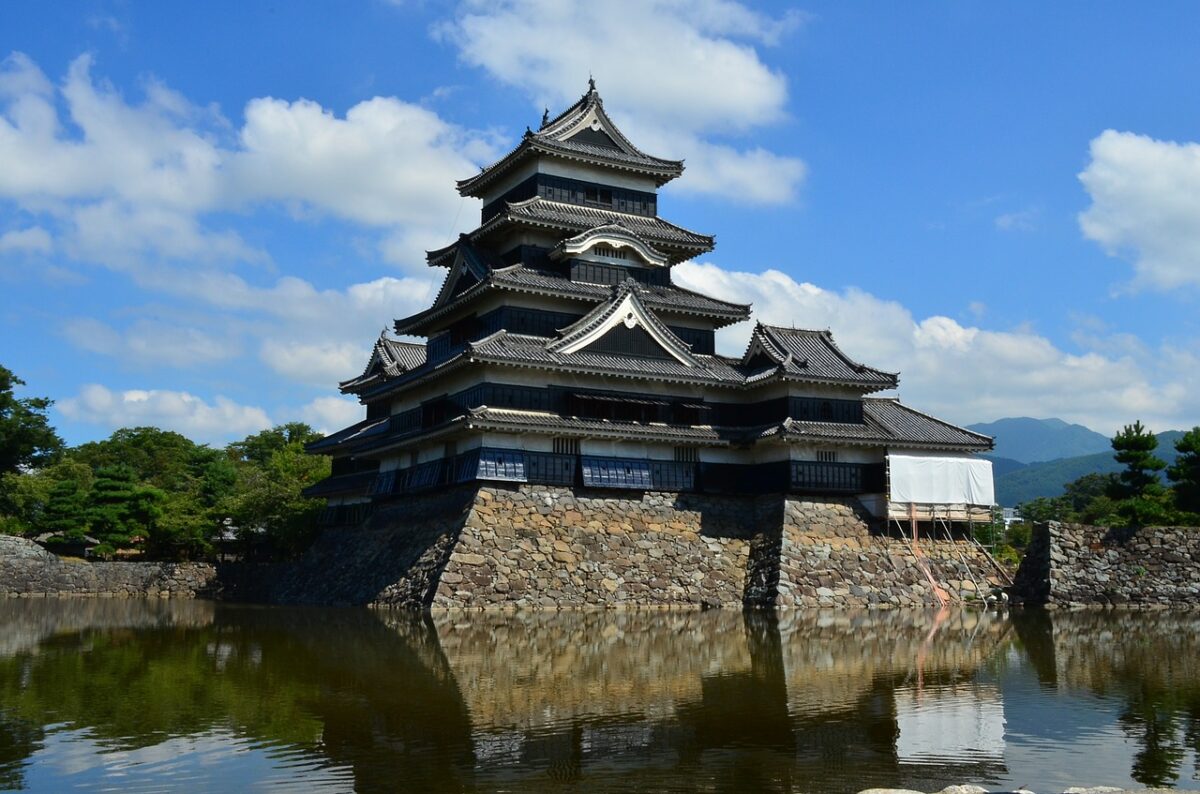
These 12 remaining castles are a testament to the dedicated efforts of those who fought to preserve them for future generations, and miraculously survived the ravages of war.
1. Bitchū Matsuyama Castle
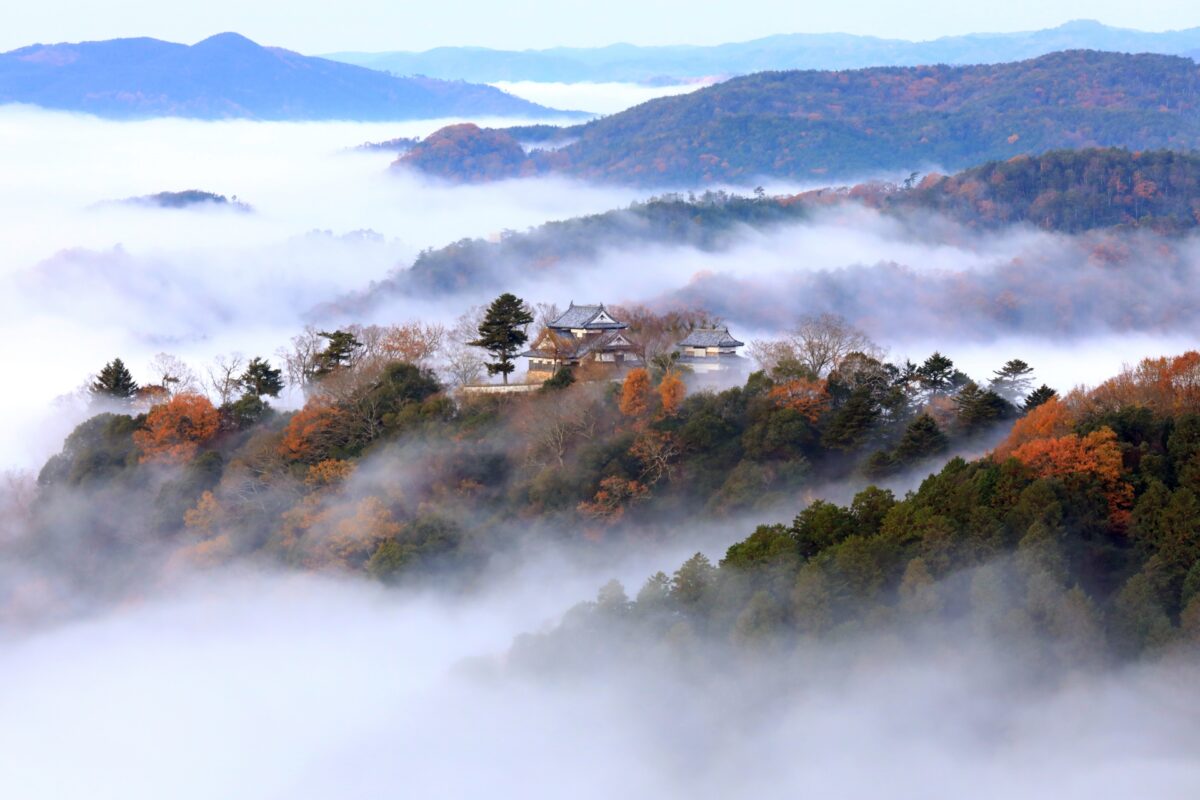
Bitchu Matsuyama Castle is an iconic castle located in Takahashi city, Okayama prefecture. It was built in 1240 by Akiba Shigenobu, a warrior during the Kamakura period, and has been loved by many people as a landmark and the most visited tourist attraction in the city. It is known as the only Yamajiro-style castle among the 12 original castles, sitting 430-meter high above the sea level. Make sure to prepare for a hike as you need to take a steep pathway to reach the castle tower before enjoying a spectacular view from there! From late September through early April, especially early in the morning when the clouds around the castle get thick, you can see the castle floating above the sea of clouds! It is often referred to as the castle in the sky, making it a unique photogenic spot featured in many travel guide books.
Opening Hours
9am – 5:30pm (Apr. – Sep.), 9am – 4:30 (Oct. – Mar.)
Admissions ¥500 (Adults) ¥200 (elementary/ junior high school students)
How to get there: From JR Bitchu Takahashi station, take a taxi and it takes about 15 min.
2. Hikone Castle
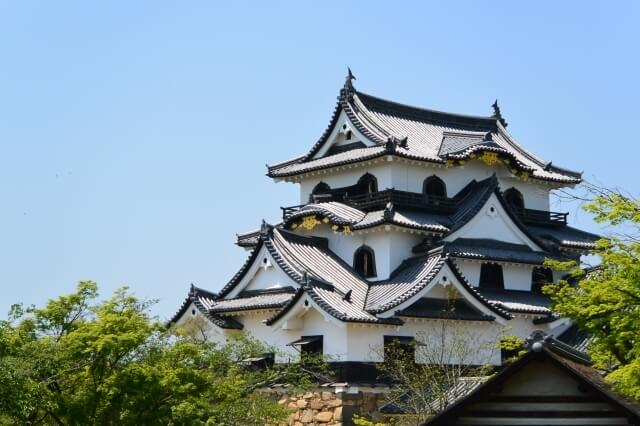
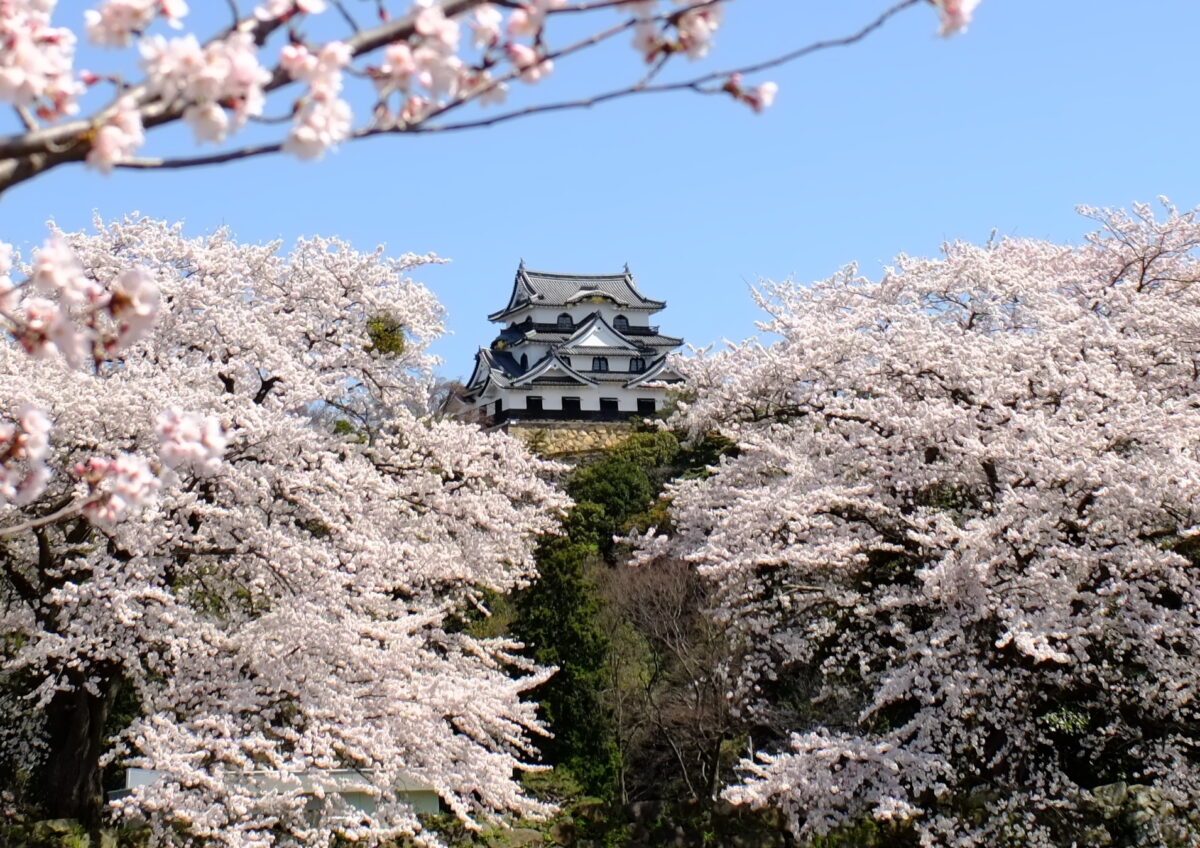
Hikone Castle is a symbolic spot located in Hikone city, Shiga prefecture. Designated as a National Treasure along with 4 other original castles such as Himeji castle and Inuyama castle, it is one of the most popular tourist attractions in the Hikone area. The construction of the castle started with an order from Tokugawa Ieyasu, the first Shogun of Tokugawa Shogunate in 1604. It took about 20 years to complete the whole castle, and it prospered as a political and business center of the Hikone clan dominated by the Ii family during the Edo period. The three-story main building is relatively small, but the remaining structures combine different architectural styles from the middle ages and the early modern ages, making it a unique historical site. Most of the structures are still in perfect condition, and some of the stone walls and moats are officially designated as Important Cultural Properties.
Opening Hours
8:30am – 5pm
Admissions ¥800 (Adults) ¥200 (elementary/ junior high school students)
How to get there: Take the JR line and get off at Hikone station. It is a 15min walk to get to the castle.
3. Himeji Castle
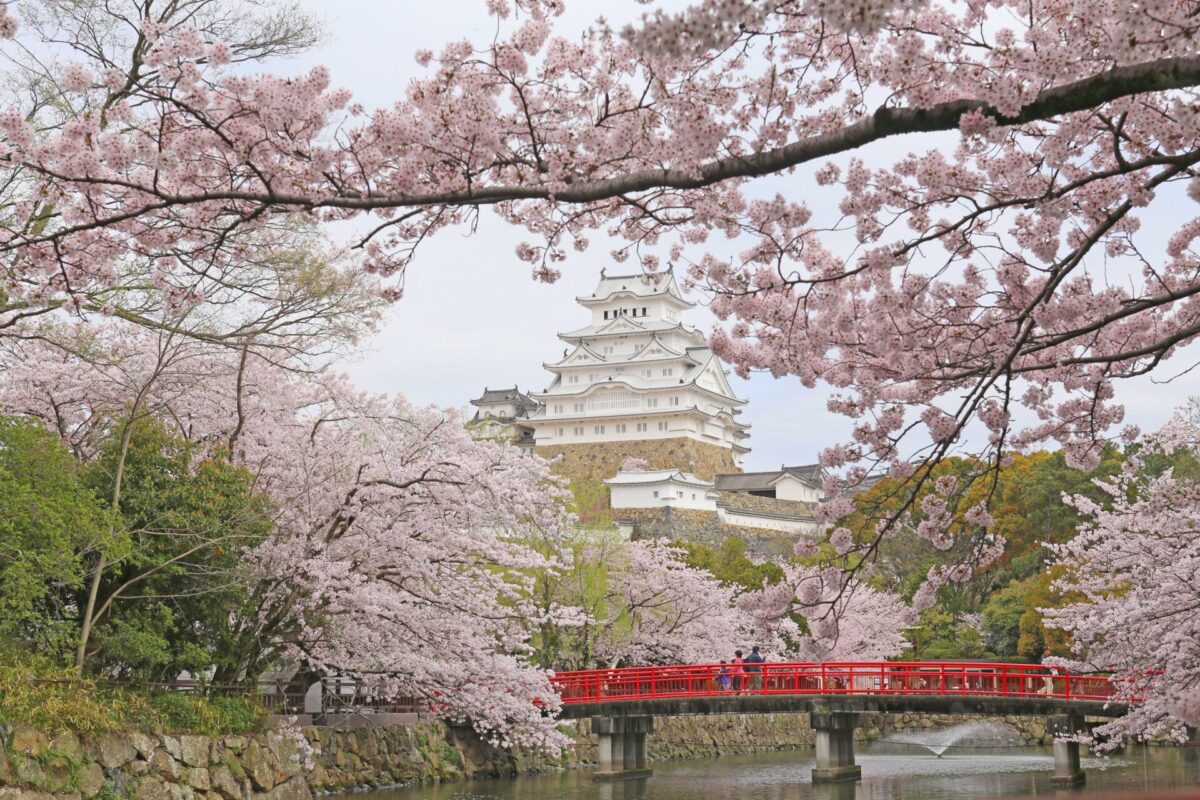
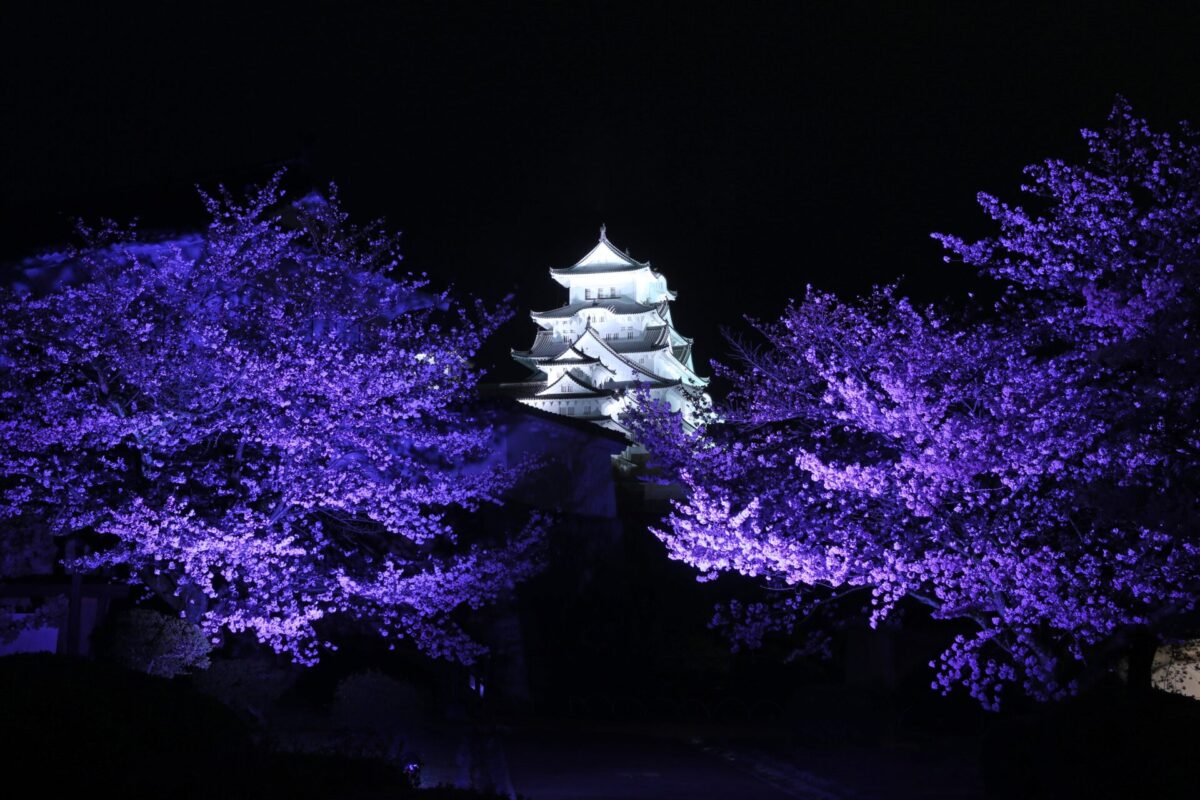
The white, beautiful facade appears in most of the travel guides that introduce the highlights that you shouldn’t miss in Japan. Himeji Castle is an iconic castle located in Himeji city, Hyogo prefecture. It is widely recognized as a representative castle in the Kansai region along with Osaka castle in Osaka, and visited by numerous numbers of tourists all year round. The elegant appearance is often referred to as Shirasagi-jo (White Heron), and reopened to the public after more than 5 years of restoration work in 2015.
The current castle complex, completed in 1609, consists of over 80 structures, and most of them fortunately survived several wars and fires unlike other castles in Japan. In 1993, it was registered as one of the first UNESCO World Heritage Sites in Japan. During cherry blossom season, the grounds are packed with people who enjoy the short lived blossoming with the beautiful castle in the background. Over this period, Himeji Castle and the cherry trees are lit up for an amazing illumination in the evening as well. With over 1,000 cherry trees, this area is a great place to view cherry blossoms day or night!
Opening Hours
9am – 4pm, Sunset – 12am for the night illumination
Admissions:
Castle day admission: ¥1,000 (Adults) ¥300 (Children)
Nishi no Maru Admission(Night cherry blossom illumination):¥600(Adults) ¥200(Children)
How to get there: From JR Himeji station, take a bus called “Shinki Bus” and get off at Otemon-mae stop.
4. Hirosaki Castle
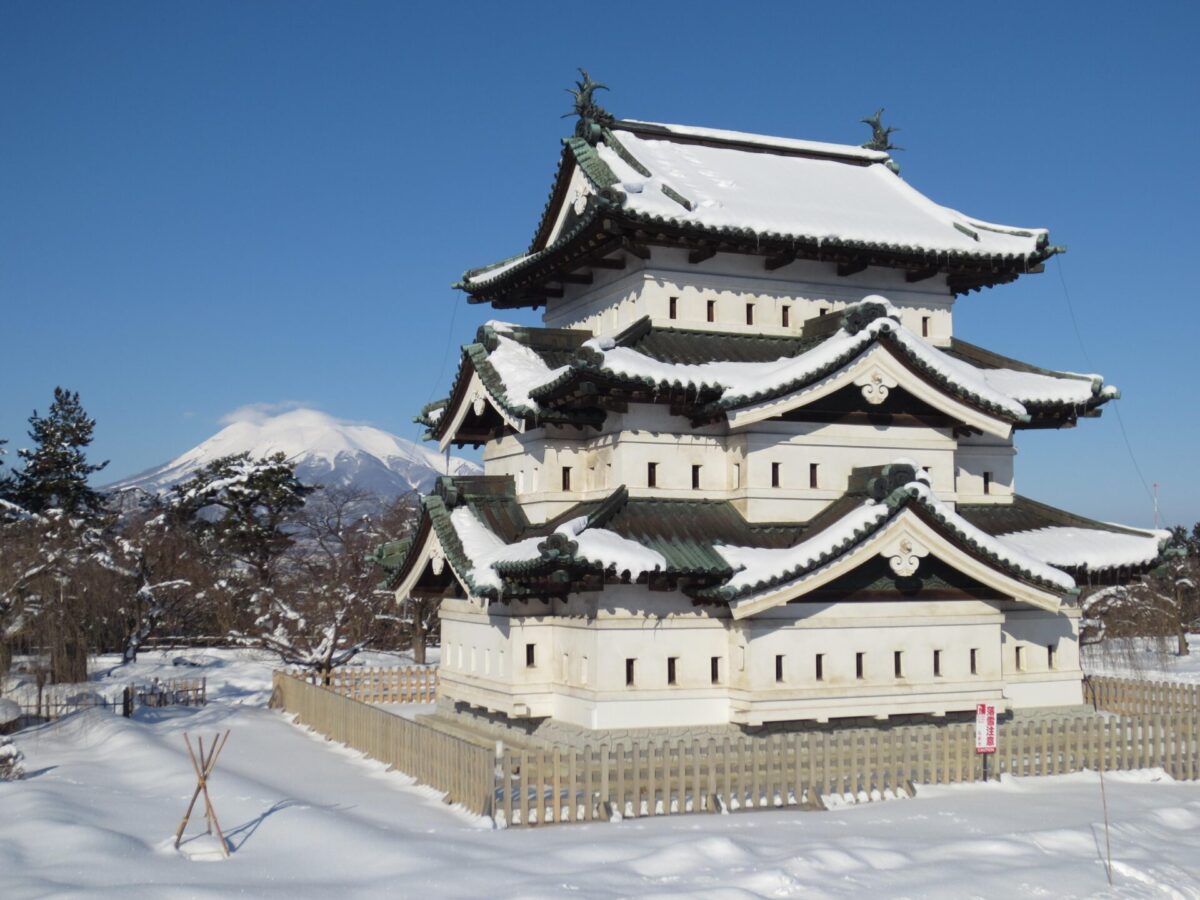
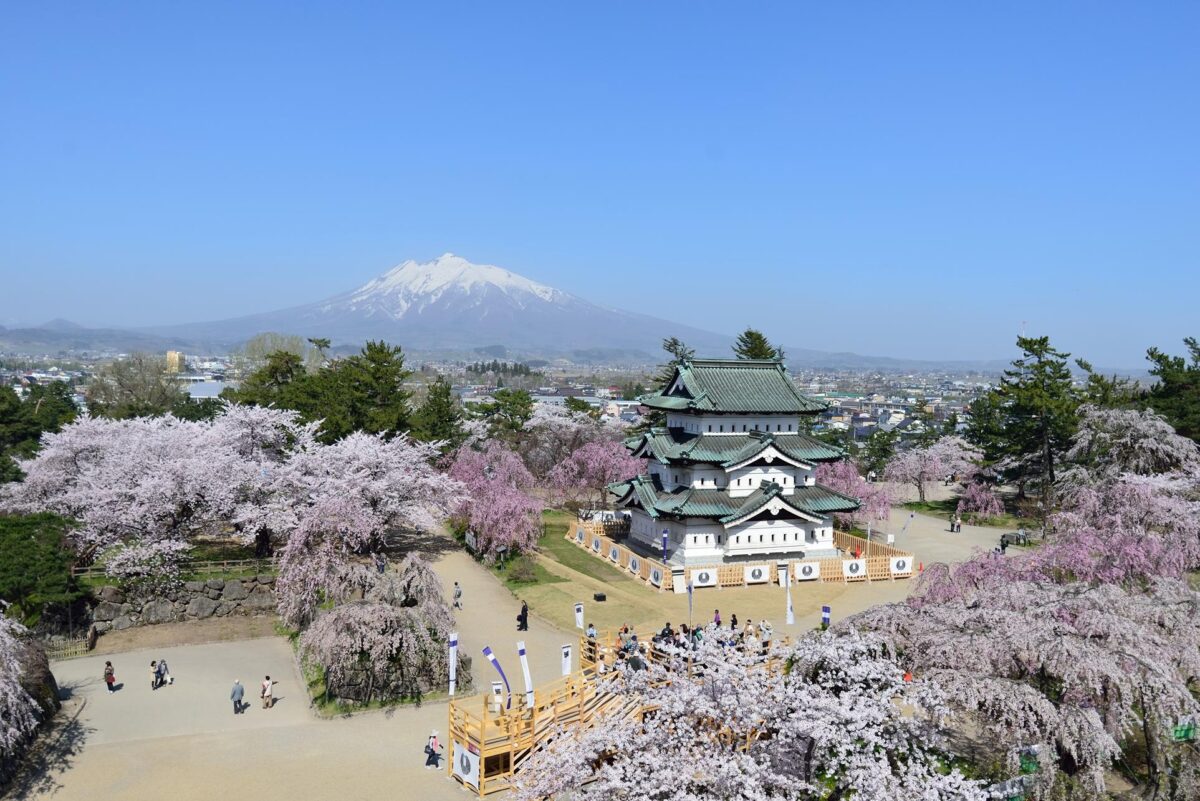
Hirosaki Castle is an iconic castle in Hirosaki city, Aomori prefecture. Oura Tamenobu, the first feudal lord who ruled the area started the construction in 1603. After his death, the construction was continued by Oura Nobuhira, his son who is also known as the second feudal lord until 1611. Although the original main tower (called Tenshukaku in Japanese) was struck by lightning and unfortunately destroyed, it was reconstructed during the Edo period and remains today. Designated as National Important Cultural Property, it is visited by lots of tourists all year round, especially in spring when over 2,600 cherry blossoms on the castle ground bloom!
Opening Hours
9am – 5pm (Apr. – 23 Nov.), 7am – 9pm (23 Apr. – 5 May for the sakura season)
※Closed from 24 Nov. through the end of Mar.
Admissions ¥320 (Adults) ¥100 (Children)
How to get there: From JR Hirosaki station, takes about 10 min by car/taxi. You can also take a bus there from the station.
5. Inuyama Castle
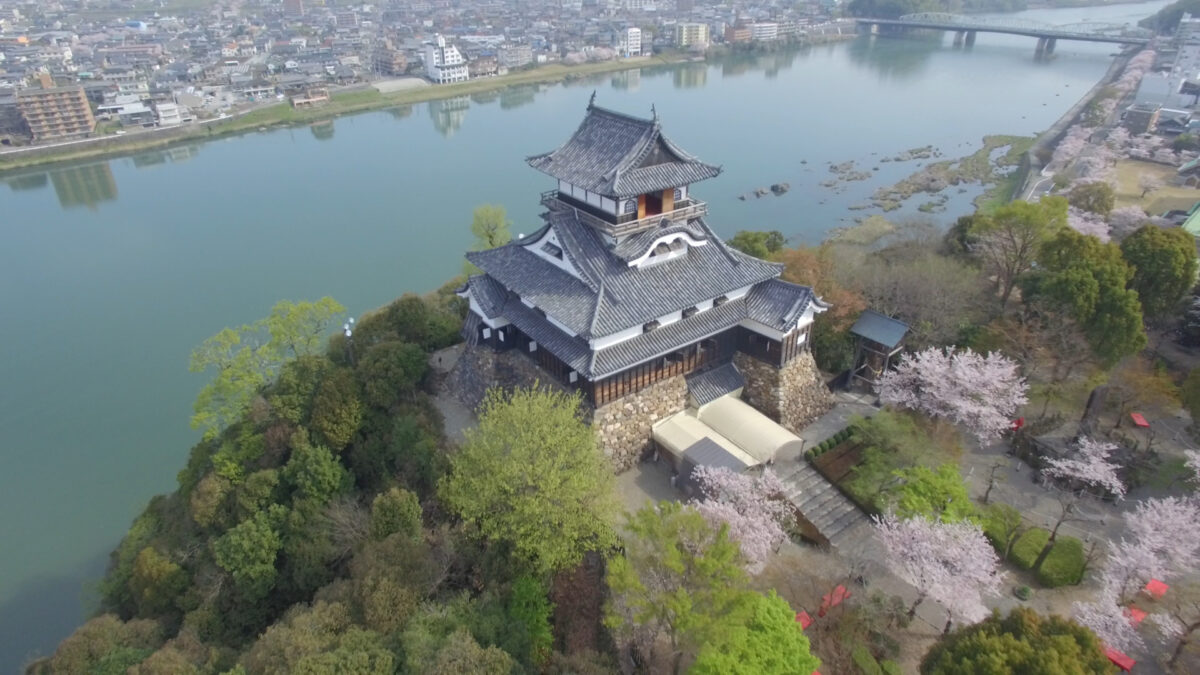
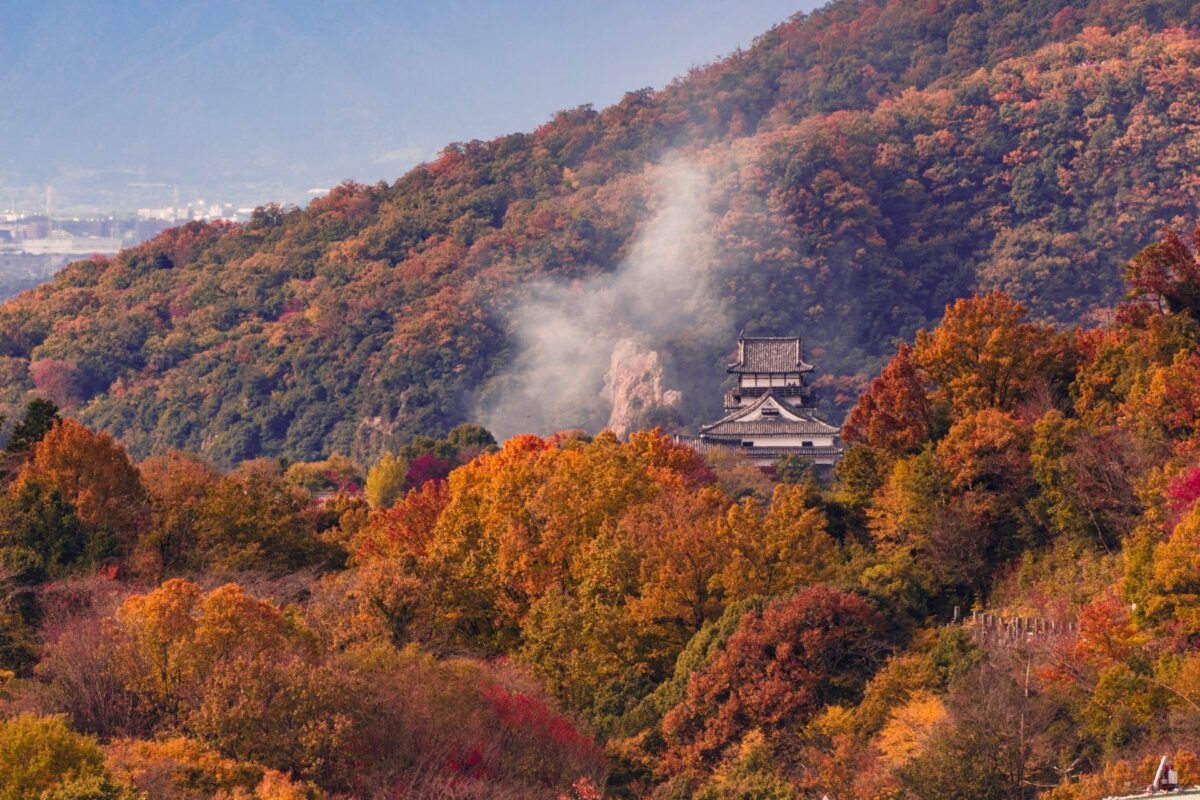
Along with Nagoya Castle, Inuyama Castle is a symbolic castle in Aichi prefecture. It stands on a small hillside overlooking the Kiso river running by the prefectural border between Aichi and Gifu. The surroundings boast a plenty of nature and allow visitors to take a refreshing stroll along the pathway along the river. The castle town nearby is full of Japanese traditional buildings which are well-preserved. In recent years, it has been attracting a number of tourists as a popular sightseeing spot where you can enjoy tasty dishes and find small gifts as well.
Opening Hours
9am – 5pm
Admissions ¥550 (Adults) ¥110 (elementary/ junior high school students)
How to get there: From JR Inuyama station, it is only a 20min walk to reach the castle and surrounding area.
6. Kōchi Castle
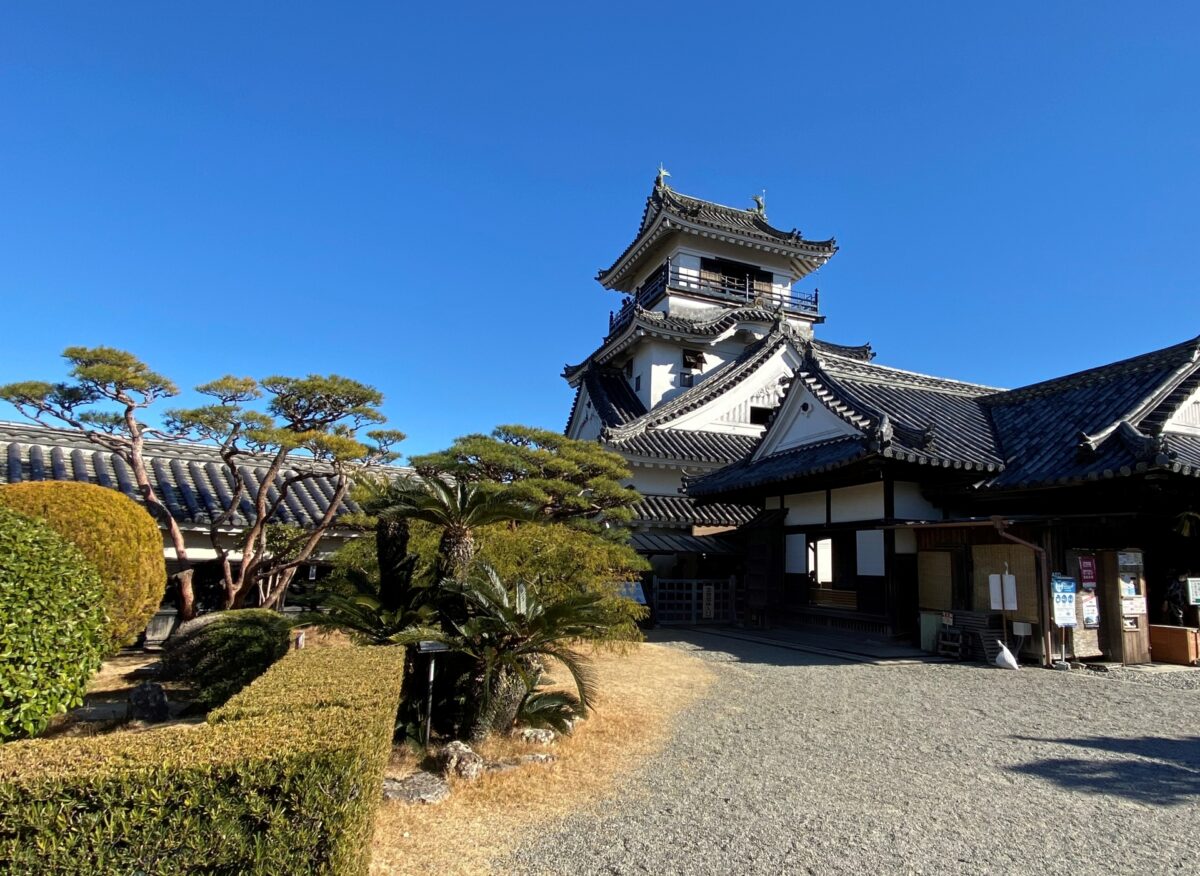
Located at the heart of Kochi city, Kochi Castle has been loved as a landmark representing the power and prosperity of the Yamauchi family, who ruled over the region during the Edo period. The construction was originally started by Yamauchi Kazutoyo, the first lord of the Tosa clan (old name for Kochi) in 1601. Although most of the buildings were accidentally burned down by fire in 1727, they were reconstructed later and some of them survived over periods and stand there even today. The main keep remains in a perfect condition, which makes it outstanding among the 12 original castles. This is also the only place where you can take a photo of both the Otemon Gate, the main entrance gate, and the castle tower altogether!
Opening Hours
9am – 5pm
Admissions ¥420 (Adults 18+)
※Admission free for under 18 years old
How to get there: From JR Kochi station, take a city bus or tram and get off at “Kochi Castle-mae” stop.
7. Marugame Castle
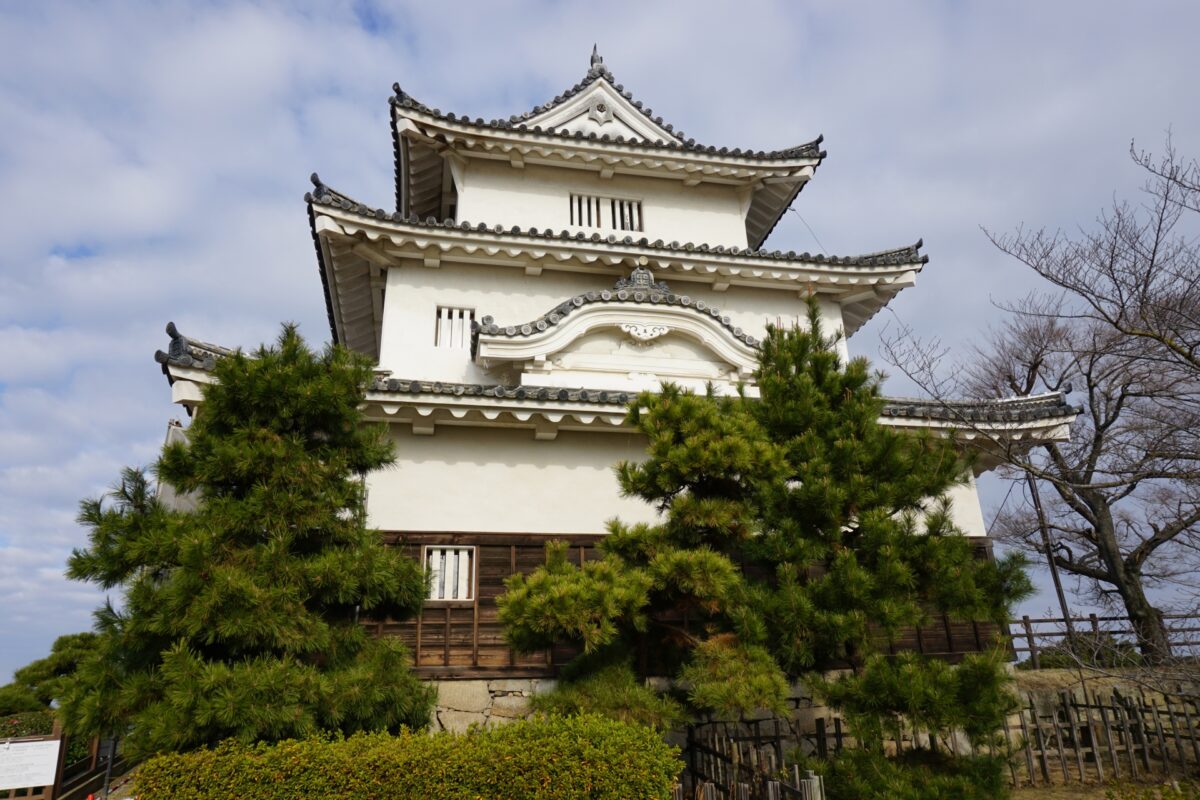
Standing on a 66-meter hillside, Marugame Castle is known for the stone walls recognized as the highest ones in Japan. The origin of the castle dates back about 400 years ago, when Ikoma Chikamasa started the construction as his subsidiary castle in 1597. It is a typical Hirayama-style castle which combines the design and architectural style of both Yamajiro-style and Hirajiro-style. The castle grounds are surrounded by moats which played a role to protect the castle from attacks. The symbolic stone walls are claimed as a masterpiece of the most advanced techniques during the early Edo period. As the size and shape of stones used for each wall is different, you can enjoy comparing the details of walls as you explore the castle grounds!
Opening Hours
9am – 4:30pm
Admissions ¥400 (Adults) Free (elementary/ junior high school students)
How to get there: From JR Marugame station, it is about a 10min walk to get to the castle.
8. Maruoka Castle
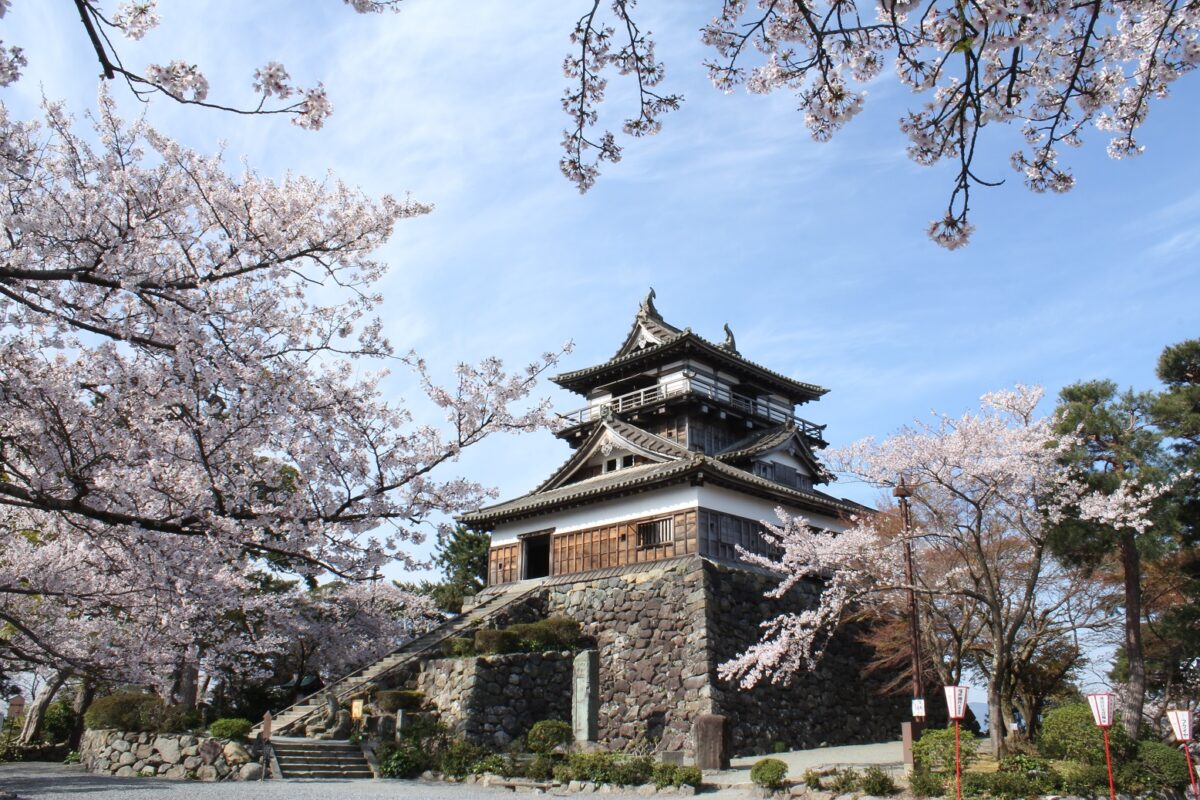
Maruoka Castle is the only castle that still has the original structure in the Hokuriku region. It’s been nicknamed “The Misty Castle” thanks to a history of being cloaked in fog when enemies would approach. Although most of the castle was demolished in 1871 in the process of westernization implemented by the Meiji government, and then again after a major earthquake, the main tower survived and is designated as Important Cultural Property. The castle was also rebuilt using its original materials. Over 400 cherry blossoms welcome visitors in spring and offer a breathtaking view that is illuminated at night as well!
Opening Hours
8:30am – 5pm
Admissions ¥450 (Adults) ¥150 (Children)
How to get there: From JR Maruoka station, take the “Keifuku Bus” and get off at Maruoka Bus Terminal Stop.
9. Matsue Castle
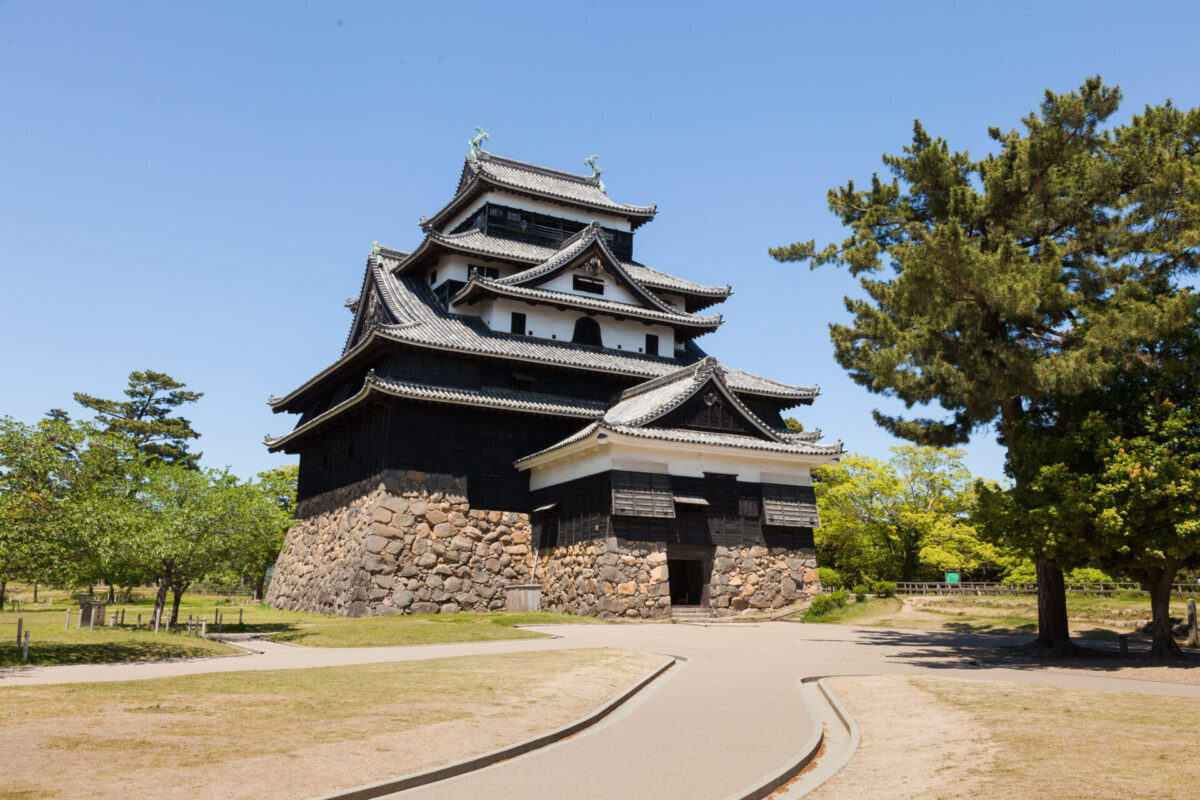
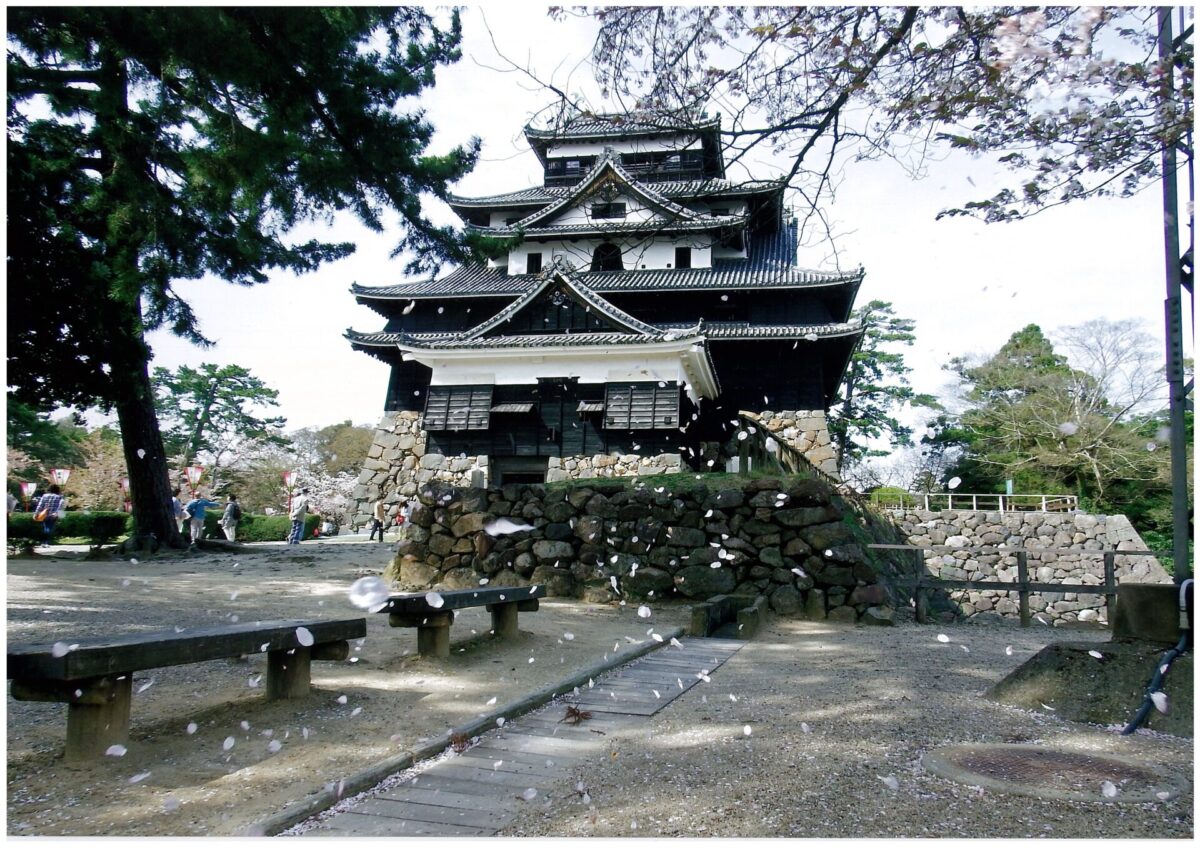
Matsue Castle was built in 1611 by Horio Yoshiharu and Horio Tadauji, who achieved a great accomplishment at the battle of Sekigahara. They were officially assigned to be in charge of the Oki and Izumo area which is currently part of Shimane prefecture. They started to build the castle in 1607, and it took almost five years to complete the construction. It is among the 5 original castles which are designated as a National Treasure. From the top floor of the main tower, there is a panoramic view of Matsue city. In spite of the remote location, it fascinates a number of visitors with the powerful black facade that gives you a completely different impression than other castles!
Opening Hours
8:30am – 6:30pm (Apr. – Sep.), 8:30am – 5pm (Oct. – Mar.)
Admissions ¥680 (Adults) ¥290 (Children)
How to get there: From JR Matsue station, take the “Lake Line Bus” and get off at the Ote-mae Stop.
10. Matsumoto Castle
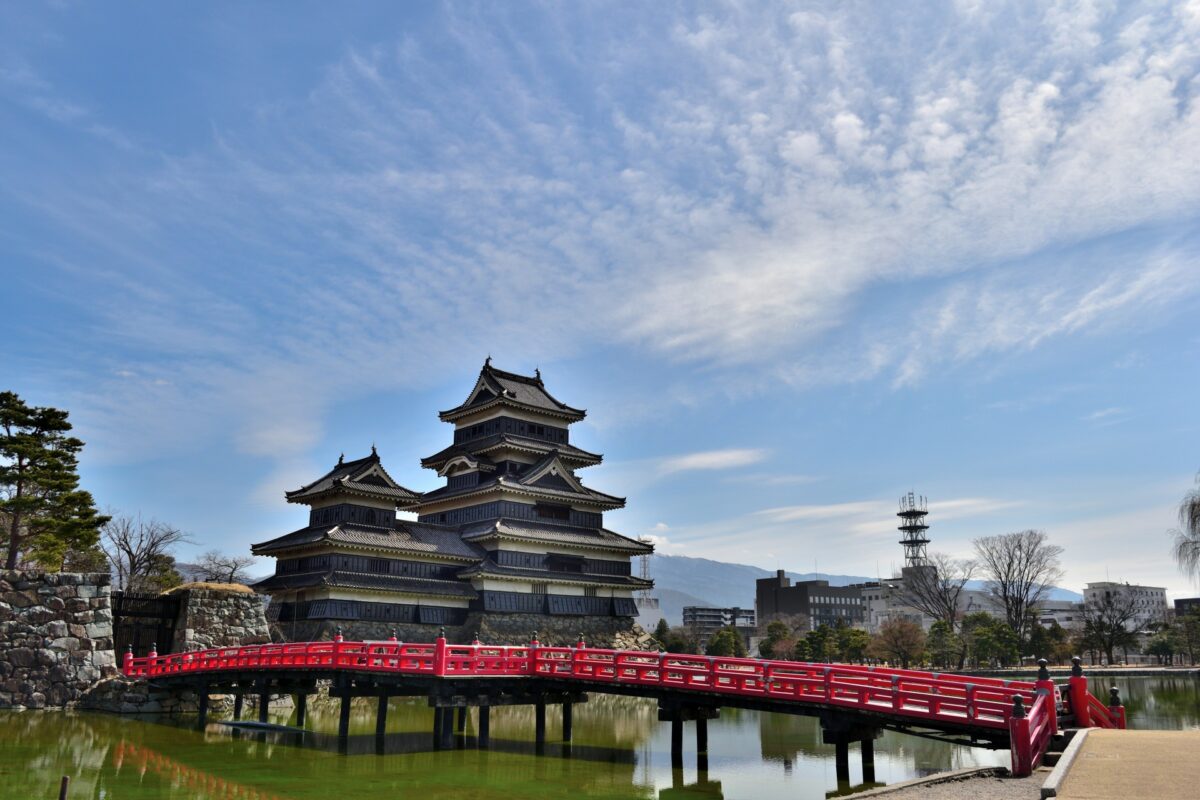
Matsumoto Castle is one of the most famous original castles located in Nagano prefecture. The history dates back to the 16th century, and has been loved as an iconic landmark in Matsumoto city by local people. The five-story main tower is considered to be built during the Azuchi Momoyama to the Edo period, and designated as National Treasure along with other 4 castles such as Himeji Castle in Hyogo and Inuyama Castle in Aichi. The black and white exterior creates a stunning view with the natural surroundings and the Northern Japan Alps in the background!
Opening Hours
8:30am – 5pm
Admissions ¥700 (Adults) ¥300 (elementary/ junior high school students)
How to get there: From JR Matsumoto station, take a local bus and get off at “Matsumoto Castle/ City Hall-mae Stop”.
11. Matsuyama Castle (Iyo)
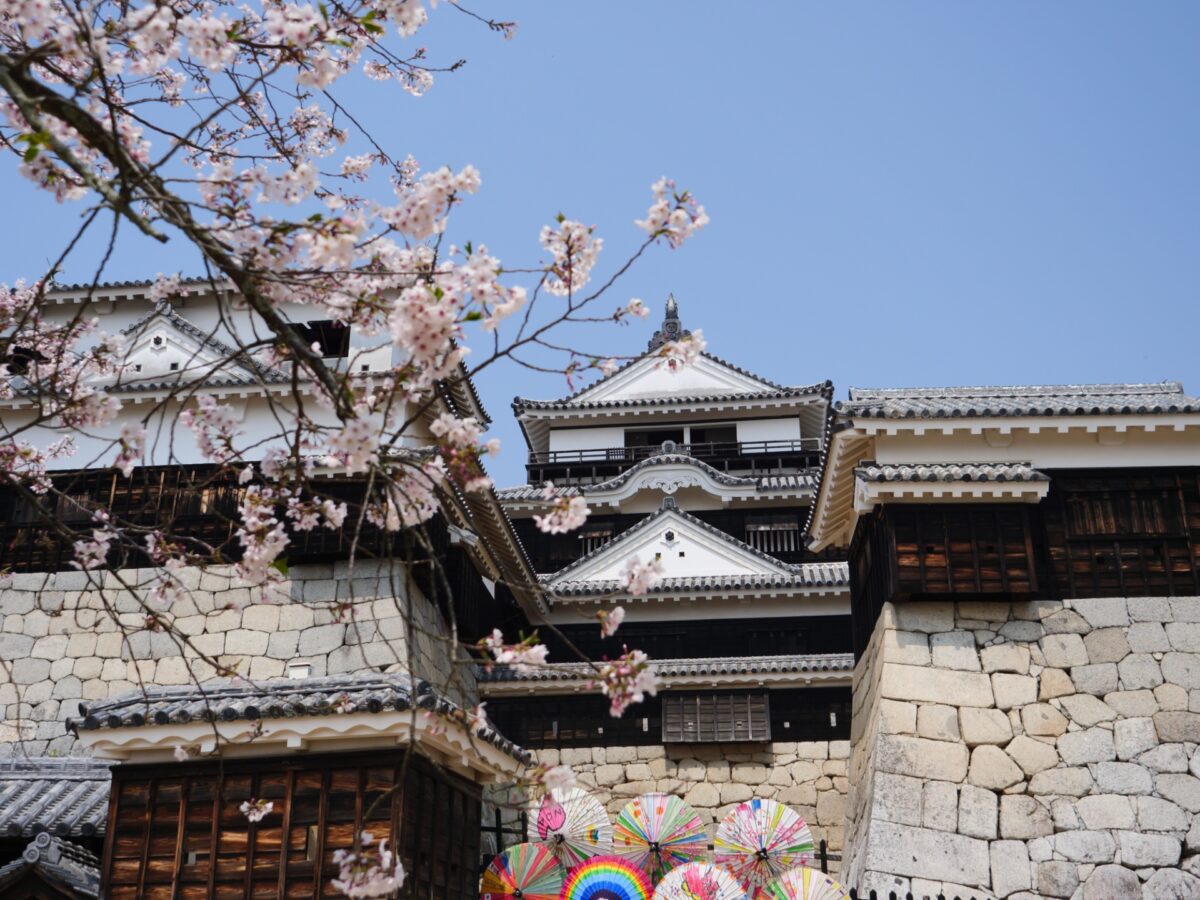
Matsuyama Castle is located in the center of the Matsuyama city in Ehime prefecture. It is a typical Hirayama-style castle standing on a 132-meter-tall hill called Katsuyama. There used to be around 40 historical structures, and 21 of them remain and are designated as Important Cultural Property. The construction was started by Kato Yoshiaki in 1602, and it took almost a quarter of a century to finally complete. The castle is accessible only by ropeway or chair lift, which takes you from the base of the hill up to the top where the main keep stands. Enjoy the stunning view from the top floor of the castle overlooking Matsuyama city and the surrounding nature!
Opening Hours
9am-5:00pm, 9am-5:30pm (Aug.), 9am-4:30pm (Dec.-Jan.)
※Varies depending on season
Admissions ¥520 (Adults) ¥160 (Children)
※need to purchase round trip tickets for ropeway or chair lift separately.
How to get there: From JR Matsuyama station, take a city tram bound for “Dogo-onsen” and get off at “Okaido Stop”.
12. Uwajima Castle
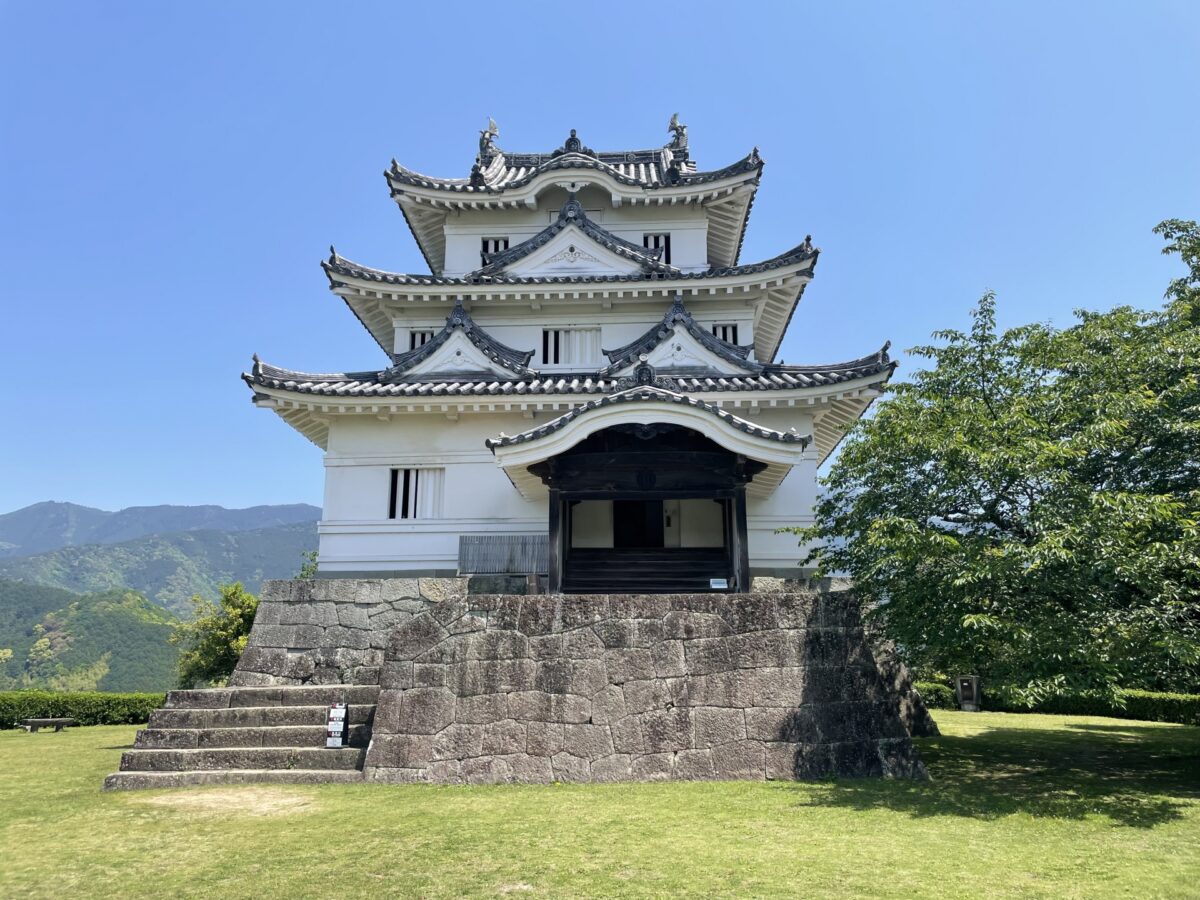
Uwajima Castle is another original castle that you can visit in Ehime prefecture. Although it’s relatively small compared to Matsuyama castle, it’s beautiful appearance fascinates tourists with the scenic surroundings all year round. It was originally designed by Todo Takatora, a famous lord who was involved in building many castles built during the Azuchi Momoyama to Edo periods. It was later used as a residence and political center for the Date family, who ruled the area through the Edo period. Standing on an 80-meter-tall hillside, there is an amazing view of Uwajima city with towering mountains and the ocean off in the distance!
Opening Hours
9am-5pm (Mar. – Oct.) 9am-4pm (Nov. – Feb.)
Admissions ¥200 (Adults) ¥160 (65 and older)
※Free admission for junior high school students and under
How to get there: From JR Uwajima station, it is a 15min walk to the castle
Visiting old castles is one of the most exciting ways to spend time while traveling around Japan. If you take a closer look at the details of each castle with a better understanding of the history, you will realize the slight differences make them special spots with unique features!
Japan Wonder Travel Tours
Japan Wonder Travel is a travel agency that offers guided tours throughout Japan.
From private walking tours to delicious Food and Drink tours, we can help you organize the best tours just for you! If you want to explore Japan and learn more about the history and backstories of each area you are visiting, our knowledgeable and friendly English speaking guides will happily take you to the best spots!
In addition, we can provide you with any assistance you may need for your upcoming trip to Japan, so please feel free to contact us if yu have any questions or need some help!
▶Tokyo Tsukiji Fish Market Food and Drink Tour
Explore the most lively and popular fish market in Tokyo and try some of the local’s favorite street foods and sake with one of our friendly and knowledgeable English speaking guides!

▶Tokyo 1–Day Highlights Private Walking Tour (8 Hours)
There’s no better way to explore an area than taking a tour with a knowledgeable local guide. You will have the chance to learn about the history and interesting background stories of Tokyo, as well as discover some hidden gems which can be hard to do without a guide.

▶Mt. Fuji Day Trip Bus Tour from Tokyo
Experience the breathtaking views of Mt. Fuji by visiting the highlights of the area on our guided sightseeing bus tour! Departing from Shinjuku in central Tokyo, you can travel comfortably to all of the best spots in the area by bus.

Follow us on Instagram, Facebook, Twitter, and TikTok for more travel inspiration. Or tag us to get featured!
Happy traveling!
